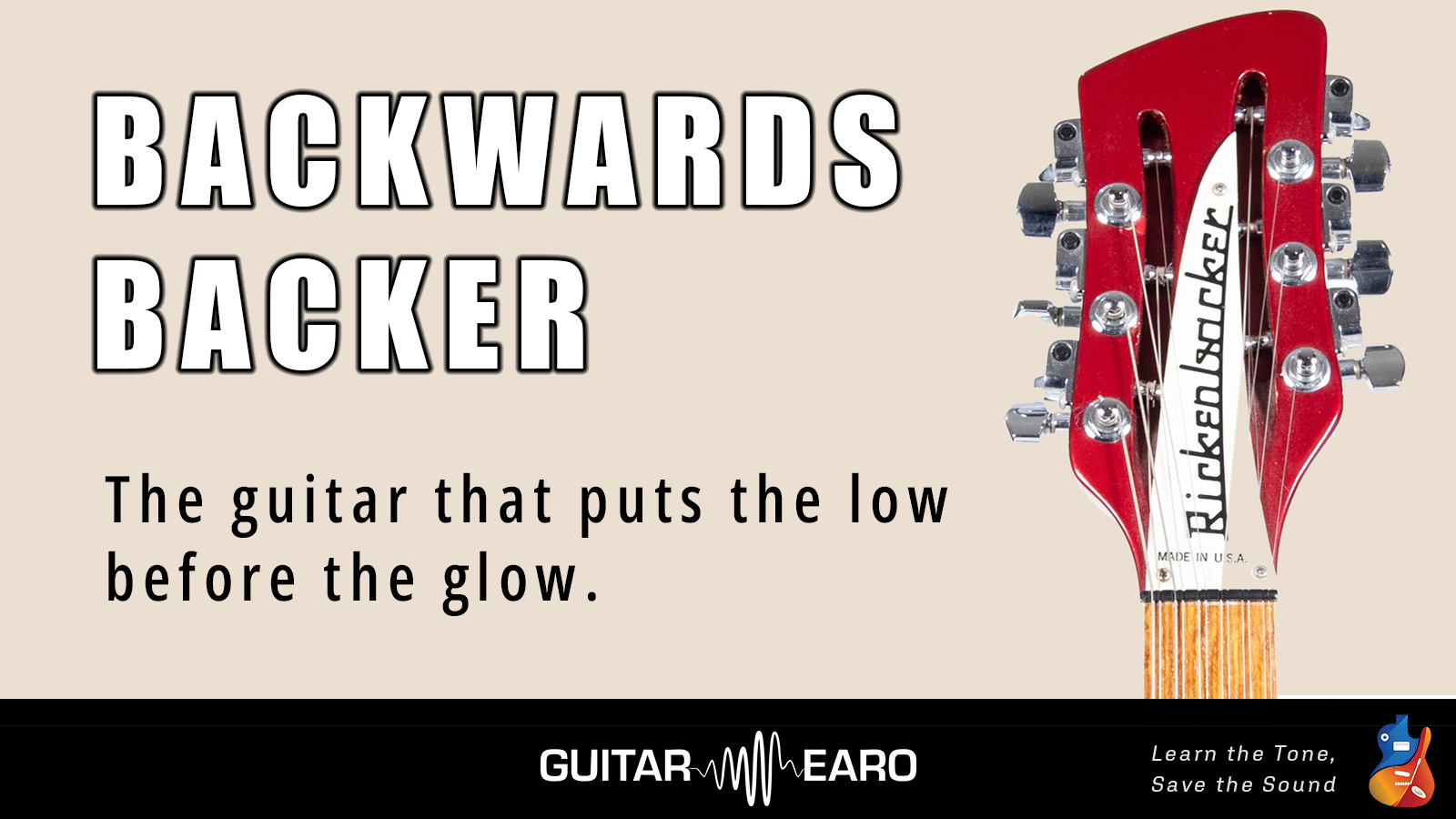The Jangle We All Know
When you think of a twelve-string guitar, you probably imagine that wide, chiming sound, the wash of brightness that fills records by The Byrds, Tom Petty, and countless others.
Most of that shimmer comes from the way twelve-strings are strung. Each of the lower four courses (E, A, D, G) has a pair: one normal string, and one thinner string tuned an octave higher. When you strum, the octave string usually speaks first, giving you a bright “sparkle” before the ear catches the thicker fundamental.
That’s how almost every twelve-string is built. Almost.
Rickenbacker’s Quiet Rebellion
Rickenbacker did something radical. Instead of putting the thin octave string first, they reversed the order.
On a Rickenbacker 12-string:
The fundamental string is closest to the pick.
The octave string sits behind it.
That small decision flips the way the guitar speaks.
What It Does to Your Ear
On a downstroke:
You hear the fat low note first.
Then, a fraction of a second later, the octave adds its chime.
The shimmer is delayed, almost like a built-in chorus. The sound doesn’t just sparkle, it pulses, then blooms.
On an upstroke, the effect is reversed: the octave hits first, then the fundamental. But since most players strum down, Rickenbacker’s inversion rewires the “default” jangle.
Why It Mattered in the ’60s
Roger McGuinn of The Byrds swore this detail was the secret behind their crystalline arpeggios. George Harrison leaned on it to open A Hard Day’s Night with one of rock’s most famous chords.
Without that reversal, the Rickenbacker might have been just another twelve-string. With it, the guitar carved out an instantly recognizable voice that shaped an era of pop music.
A Debate That Never Dies
Some guitarists argue the magic is overstated. They’ll tell you stroke direction makes the bigger difference that anyone with a careful right hand can mimic the effect.
Rickenbacker disagrees. To this day, they defend the reversed order as essential to their trademark sound.
The Bigger Lesson
Tiny mechanical details can change history. Not a new amp. Not an exotic pickup. Just the order of two strings.
The Rickenbacker 12-string is proof that sometimes the smallest tweak creates a sound that becomes the sound.
👉 Next time you’re in a tone debate, remember: the difference between “ordinary shimmer” and “The Byrds’ jangle” was one decision about string order.
⚡ Thanks for reading Guitar Earo.
This Substack is for guitarists who want more than recycled myths. We dig into the experiments, the culture, and the science behind the sound of the electric guitar.
👉 Subscribe to join the growing community of tone nerds and to follow our work building the first technology that trains your ear to recognise the sound of real guitars.
Learn the Tone.
Save the Sound.




